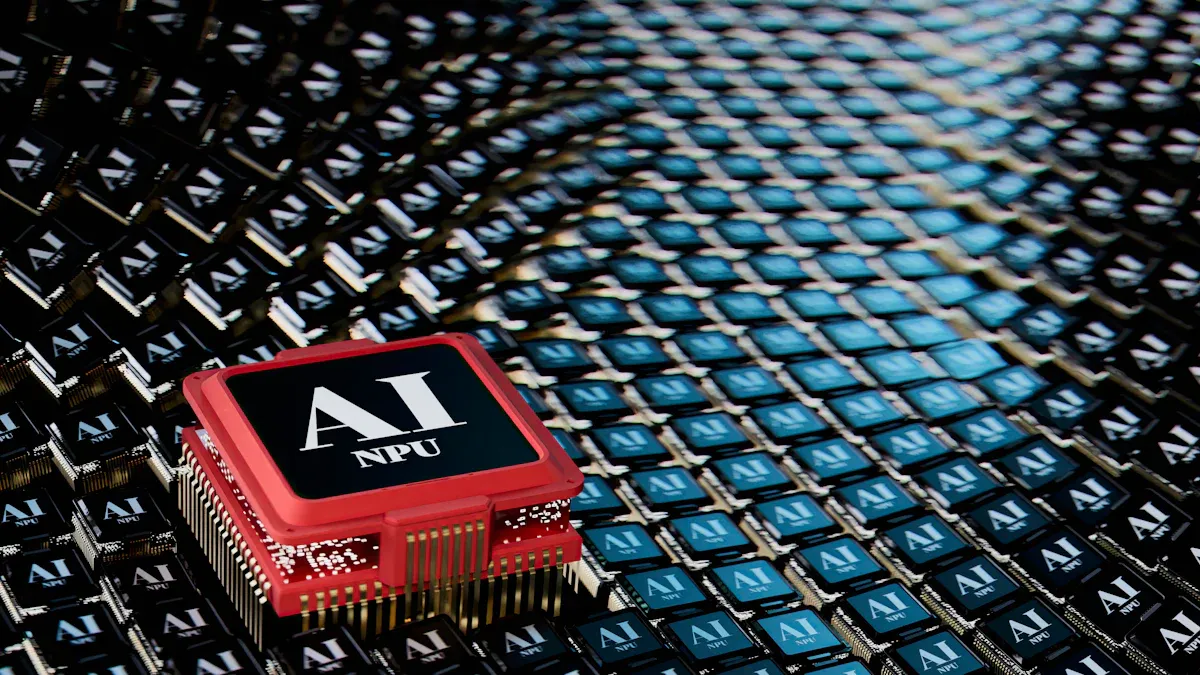How Analog Devices Ensures a Resilient Chip Supply Chain

ADI Analog Devices Chip Supply remains robust thanks to advanced tools and strategic planning.
ADI Analog Devices Chip Supply is supported by the operation of 10 factories and partnerships with 50 other facilities across 15 countries.
This global network ensures ADI Analog Devices Chip Supply remains reliable and accessible to customers worldwide.
To further strengthen ADI Analog Devices Chip Supply, the company plans to double production in regions like the U.S. and Europe by 2025.
Expansions in factories located in Oregon, Ireland, and Washington are key to achieving this goal.
ADI Analog Devices Chip Supply also benefits from cutting-edge semiconductor technology.
By integrating high-voltage analog signals with digital processing on a single chip, ADI Analog Devices Chip Supply becomes safer and more adaptable.
This innovation enhances manufacturing processes and allows ADI to address diverse challenges across various industries.
Key Takeaways
Analog Devices runs 10 factories and works with 50 partners globally to keep chip supplies steady.
The company aims to double U.S. and Europe production by 2025, focusing on growing key factories.
A mix of making chips in-house and working with partners gives flexibility and lowers risks.
Big investments, like a $1 billion upgrade in Oregon, improve chip tech and help local jobs.
Smart tools like control towers and AI help Analog Devices track inventory and quickly adjust to market needs.
Hybrid Manufacturing Model for Stronger Supply Chains
Mixing Internal Production with Outside Partnerships
Analog Devices uses a mix of its own factories and partner facilities. This helps keep the supply chain strong and steady. The company can adjust production to meet changing global needs for chips.
Balancing production times between factories improves system strength.
Analog Devices invests in this model to lower risks and stay flexible.
Switching production between its own factories and partners keeps operations running smoothly during tough times.
Big companies like Intel and AMD also use this strategy. Intel works with outside factories while focusing on designing chips. AMD teams up with Taiwan Semiconductor Manufacturing Company (TSMC) to boost innovation and efficiency.
Working with Leaders Like TSMC
Analog Devices teams up with top companies like TSMC to make its system even better. These partnerships help grow production and solve big problems like healthcare and climate issues.
TSMC is building a $12 billion factory in Phoenix, Arizona. This project, backed by the U.S. CHIPS Act, is the largest foreign investment in U.S. chip-making so far.
Analog Devices uses TSMC’s skills to improve production and meet rising chip demand. This teamwork shows how combining internal and external strengths leads to new technology and reliable supply chains.
Reducing Regional Supply Chain Problems
The hybrid model helps avoid problems tied to specific regions. By spreading production across its own factories and partners, Analog Devices avoids relying too much on one area.
This plan reduces risks from political issues, natural disasters, or other surprises. For example, moving production between locations keeps things running during regional troubles.
Numbers show the benefits of this approach:
Statistic | What It Means |
|---|---|
83% Faster App Deployment | Companies using hybrid systems launch apps much quicker. |
47% Lower IT Costs | Hybrid systems save money on tech over three years. |
76% Better Data Integration | Companies improve data sharing for smarter decisions. |
35% More Efficient Production | Real-time data boosts factory performance. |
4.3x ROI in 18 Months | Hybrid systems pay off quickly with high returns. |
Analog Devices’ mix of its own factories and partnerships, along with help from TSMC, keeps its chip supply chain strong and ready for global challenges.
Strategic Investments in Semiconductor Facilities

$1 Billion Upgrade to the Oregon Plant
Analog Devices is spending $1 billion to improve its Oregon factory. This shows how serious the company is about better chip technology. The upgrade will help the factory make more powerful chips for cars, healthcare, and communication tools. The Oregon factory is key to Analog Devices' plan to grow U.S. production.
The improvements include using advanced machines and precise engineering. These changes make the factory work faster and more reliably. This helps keep the chip supply steady, even when markets change. The investment also supports the company’s goal to double U.S. production by 2025. This move strengthens Analog Devices as a top chip maker.
Development of the Limerick, Ireland Facility
The Limerick factory in Ireland is another big step for Analog Devices. The company has spent EUR 2.73 billion here, creating over 19,000 jobs and boosting the local economy. The 'Limerick 2030' plan, with EUR 250 million invested, aims to add 5,000 more jobs and improve the area.
This factory focuses on research and new ideas for making chips. It helps solve tough problems like clean energy and smart machines. By working with local schools and research groups, the Limerick factory gets fresh talent and ideas. This teamwork makes Analog Devices stronger and known for leading in technology.
Diversified Manufacturing Footprint Across the Globe
Analog Devices has spread out its factories worldwide to avoid risks. The company now uses places in Asia-Pacific and Mexico instead of relying mostly on China. ASEAN countries offer tax breaks and easy business rules, making them good for chip production. Mexico is close to North America and has cheaper labor, which helps expand operations.
This global setup means the company doesn’t depend on one region. Chips can still be made during political or economic problems. With factories and partners worldwide, Analog Devices keeps its supply chain flexible and reliable. This plan helps the company grow and deliver its technology to customers everywhere on time.
Innovations in Semiconductors and Supply Chain Strategies
Inventory Optimization Techniques
Managing inventory well is key to a strong supply chain. Analog Devices uses smart methods to keep inventory levels balanced. Predicting demand helps the company know what customers will need. This avoids having too much or too little stock.
The company uses Just-In-Time (JIT) to order materials only when needed. JIT saves money and improves cash flow. ABC analysis sorts inventory by value, focusing on important items first. Advanced tools help find patterns and make better decisions.
Analog Devices always works to improve its systems. Teamwork and new ideas keep inventory plans flexible. These methods help the company stay ahead in making high-tech chips and digital tools.
Supply Chain Control Towers for Real-Time Monitoring
Control towers give Analog Devices a clear view of its supply chain. These systems track inventory, shipments, and problems as they happen. Using smart tech like IoT and big data makes decisions faster and better.
Other companies show how control towers work well. Walmart uses them to manage stock and work with suppliers. Intel improved production and cut extra inventory with this system. Amazon uses control towers for fast delivery and better routes.
Analog Devices combines these tools with its chip-making strategies. This helps automate processes and improve performance. It ensures steady supplies for industries needing advanced technology.
Dynamic Allocation Systems to Address Seasonal Demand
Seasonal changes in demand can be hard for supply chains. Analog Devices uses smart systems to handle these shifts. AI and machine learning study demand and adjust inventory quickly.
This system prevents running out of stock and keeps inventory balanced. It also makes the supply chain more reliable. Automation helps the company stay ready for market changes.
This plan fits with Analog Devices' focus on new technology. By using real-time data and smart tools, the company delivers dependable solutions. It also keeps its supply chain strong and flexible.
Analog Devices shows its dedication to a strong chip supply chain. It uses a mix of its own factories and partners. The company also invests in new factories and smart supply chain methods. These steps help keep production steady and flexible in changing markets.
By using advanced chip technology, Analog Devices solves big industry problems. It stays dependable for its customers around the world. This forward-thinking plan boosts the company’s earnings and success. With factories worldwide and smart solutions, Analog Devices leads in making chips. It sets high standards for great work and new technology.
FAQ
What makes Analog Devices' supply chain strong?
Analog Devices uses a mix of factories and smart tools. This plan keeps production steady and lowers risks during problems.
How does Analog Devices handle regional supply chain issues?
The company spreads its factories across different areas. By using both its own factories and partners, it avoids depending on one place. This reduces risks from politics or natural disasters.
How does technology help Analog Devices' supply chain?
Analog Devices uses tools like control towers and AI systems. These tools track inventory, manage resources, and quickly adjust to changes.
Why is the Oregon factory upgrade important?
The $1 billion upgrade makes the Oregon factory better and faster. It helps the company make more chips in the U.S. by 2025. This supports industries like cars and healthcare.
How does Analog Devices work with TSMC?
Analog Devices teams up with TSMC to improve chip-making. Together, they meet growing demand and solve big problems like climate change and health issues.
See Also
Innovative Developments in Automotive Chip Technology Today
Proven Approaches to Overcome Electronic Component Shortages
Key Trends Influencing the Analog IC Sector by 2025
Why ON Semiconductor's Power Management Solutions Are Crucial
Best Practices for Sourcing Electronic Components During Crises
